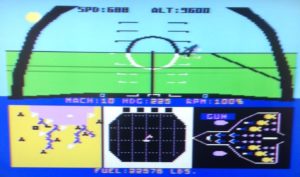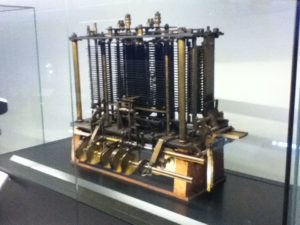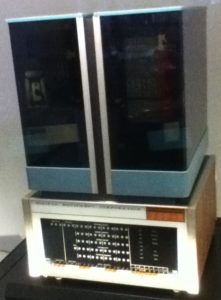If you sense a dearth of recent posts, you’re right. February and March have been insanely busy, including two long trips. The first trip took us to Seattle to see our grandson who grows by leaps and bounds every day. The second trip was to South Africa where we married off our nephew and welcomed a wonderful South African lass into our extended family.
Naturally, computer science and history always lurk in the background, occasionally coming center stage. In February, I completed a second donation to Living Computers in Seattle. I donated two working Atari computers (a 400 and an 800XL) to their collection. Everything went — peripherals, joysticks, touch pad, and software. I played a few rounds of Missile Command, etc. before sending off the entire lot. I can’t believe that I spent hours (days!) playing F-15 Strike Eagle with its cheesy graphics. 🙂 If you want to play old Atari machines and much more, please visit. You’ll have a good time!
Right on the heels of the donation, we stopped into Living Computers for a visit. We had a fun chat with Aaron Alcorn who is the Museum’s curator. He let us in about some of the Musuem’s plans as well as swapping photos of our kids (and grandkid). We saw our donated — now theirs — Apple Performa 6400 VEE in the second floor workshop/open storage. The Museum is planning a major exhibit for that space. (Restoration of an historically important mainframe. Stay tuned.)
After a few brief weeks at home, we took off for South Africa via London. Our original itinerary allowed for a day trip to Bletchley Park and the The National Museum of Computing. Unfortunately, the plan was dashed by the weather. A nor’easter hit Boston on the departure date and we had to shorten our stay in London to an over-nighter.
Nonetheless, we walked over to London’s Science Museum on Exhibition Road, bagging yet another science museum in yet another city. (We also wanted to see how many holes it took to fill the Albert Hall.) The mathematics and information age exhibits helped to make up for losing Bletchley Park.
The Science Museum has an excellent collection of mechanical computing devices including Charles Babbage’s analytical engine (trial model, 1871). It took a little digging to find any reference to Lady Ada Lovelace whose contributions, I dare say, were longer-lasting than Babbage’s. Mechanical computing engines precede electronic computing, using physical machines (or even water flow!) to model other real-world phenomena by mathematical analogy. These devices, including so-called analog computers, filled the need for high(er) speed computation before digital computing really took wing. (By the way, electronic analog computing seems underrepresented at both the Science Museum and Living Computers. Just sayin’.)
My photography skills and the iPod camera were not up to snuff. I had hoped to include many images here. However, we did see quite a number of historically significant machines: Hollerith card sorter, EDSAC-1, Pilot ACE, LEO II, Besem-6, Newton Clamshell, Xerox PARC Alto, and early PDP-8 among the finds. A number of machines/artifacts are on loan from the Computer History Museum in Mountain View, California. (Not far away from where I once lived, BTW.)
Seeing the PDP-8 in a glass case at the Science Museum, really made me “get” the concept behind Living Computers. Here was a poor old machine trapped in a glass cage. At Living Computers, you can use a PDP-8! This isn’t meant to be a slam on the Science Museum because preservation of early computing artifacts is incredibly important, especially in a society and culture which is all too willing to throw away the last generation of shiny thing. It does highlight the unique aspect and mission of Living Computers: Museum + Labs. Please join and visit.
Copyright © 2018 Paul J. Drongowski



